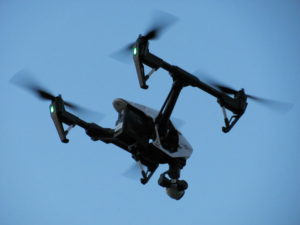
Last week, the FAA moved forward with rulemaking on expanded drone operations with the release of several key documents: (1) a Draft Notice of Proposed Rulemaking (NPRM) for Operation of Small Unmanned Aircraft Systems over People, (2) a Draft Advanced Notice of Proposed Rulemaking (ANPRM) for Safe and Secure Operations of Small Unmanned Aircraft Systems, and (3) the announcement of the Unmanned Traffic Management (UTM) Pilot Program. This alert, the second of two, addresses the Draft ANPRM for safety and security and the UTM Pilot Program. The first alert, which addressed the Draft NPRM, can be found here. Manufacturers of all small drones would be well-advised to review the questions and track industry comments regarding these proposed rules.
Draft ANPRM
The FAA is contemplating additional rulemaking to address safety and security concerns associated with small drone integration. Feedback from industry in response to the ANPRM will help the FAA determine the extent of future operational limitations under the Small UAS Rule. The Draft indicates that the ANPRM will seek comment on:
- Requirements for stand-off distances (the space between a drone and the nearest person or object).
- The utility of applying performance limitations to address safety and security concerns.
- Categories of operations that should be subject to UTM requirements.
- Additional restrictions on hazardous payloads.
- System design requirements for complex operations outside the scope of the NPRM for operations over people.
The ANPRM is a precursor to a proposed rule. The FAA will not seek or solicit comments until the final ANPRM is published in the Federal Register. Like the Draft NPRM for operations over people, the Draft ANPRM does not address recreational operations of small drones. Accordingly, manufacturers of all small drones would be well-advised to review the questions and track industry comments as it may affect them. Many questions in the ANPRM address system design, so industry responses will likely influence future manufacturing rulemaking. Commercial pilots would also do well to review the Draft ANPRM carefully, as it addresses performance limitations that may affect commercial operations.
UTM Pilot Program
Despite receiving less media attention than the draft rules, the UTM Pilot Program (the Program) is an important piece of the FAA’s announcement.
The Program, which will run through September 2019, will develop and demonstrate an air traffic management system, similar to Air Traffic Control, for low-altitude unmanned operations. It will provide the FAA with crucial data for future UTM rulemaking. Through a competitive RFP process, the FAA selected three UAS test sites to assist the Agency in its effort to demonstrate a UTM system capable of safely integrating drones into the National Airspace System. The three selected sites are Nevada UAS Test Site Smart Silver State (Nevada), Northern Plains Unmanned Aircraft Systems Test Site (North Dakota), and Virginia Tech Mid-Atlantic Aviation Partnership (Virginia). Each site built a team of drone industry partners to participate in the demonstrations. Although the FAA has awarded agreements to three sites, the FAA Reauthorization Act of 2018 contemplates UTM testing at additional sites, indicating that drone industry stakeholders who are not on a selected team may still have the opportunity to participate in UTM development.
The full texts of the Draft NPRM and Draft ANPRM can be found here.